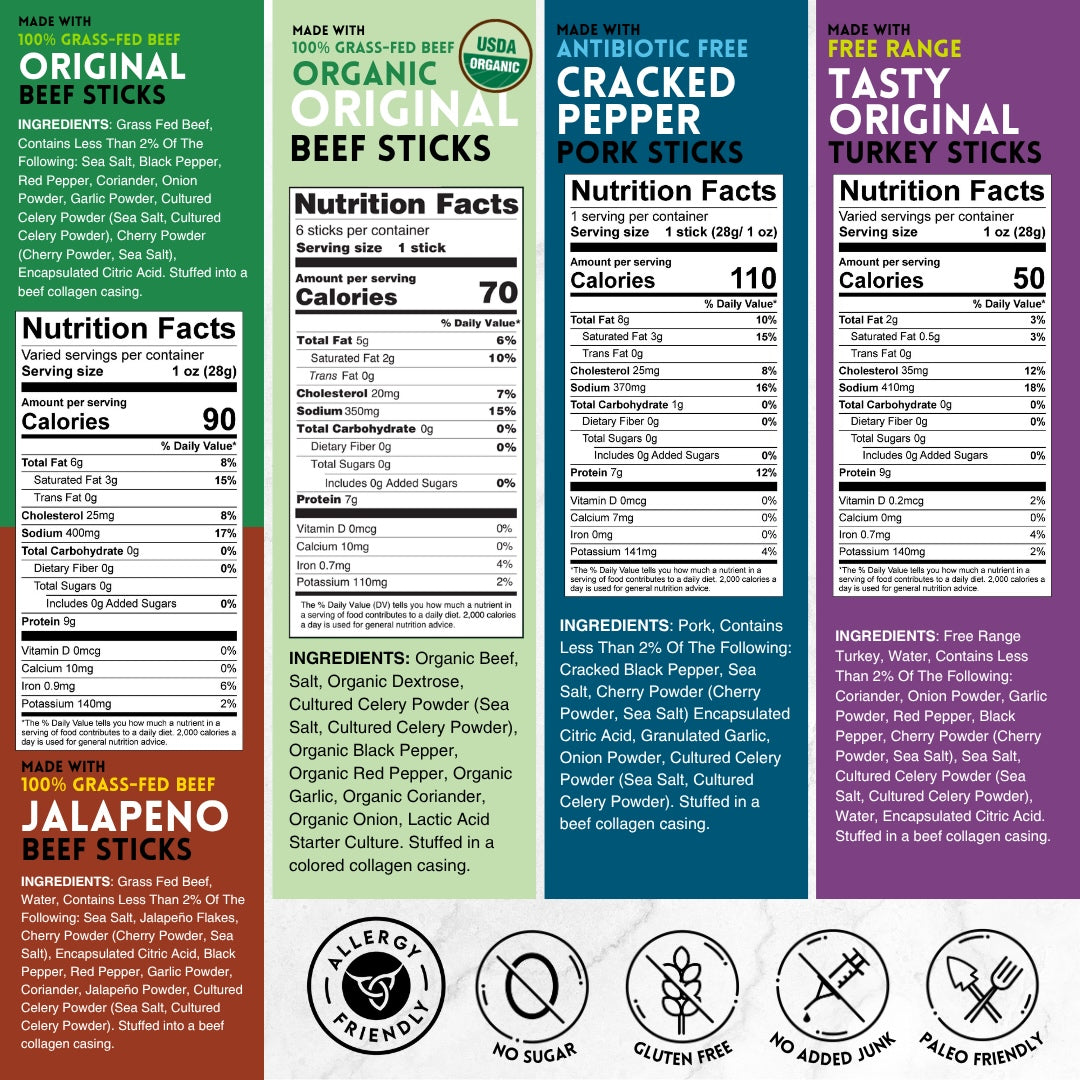




Get a delicious variety of our best-selling meat sticks.
Grass-Fed Beef, Free Range Turkey, Certified Organic Beef & more
Each stick is packed with protein & great flavors
One-time purchase
Pack Sizes
12 Count
24 Count
Satisfaction Guarantee
Free Shipping Over $40
Subscribe and Save (Save 10%)
Pause, skip, or cancel anytime
Pack Sizes
12 Count
24 Count
Pack Sizes
1 month
2 months
2 months
12 Count
24 Count
Satisfaction Guarantee
Free Shipping Over $40

Zero Sugar




Top 9 Allergen-Free




Zero Sugar




Top 9 Allergen-Free



“I finally found a healthy snack my kids will eat”
perfect for a low/ no-carb easy travel
Getting ready for another extended trip. Stocking up on the Mission Meats beef sticks and turkey sticks is the first thing I do to prepare for traveling! They are sugar-free and don't need refrigeration.
Cher O.
wowowow!!! is all i can say
My family and I have enjoyed these clean and delicious beef sticks and jerky for about 6++ years now. What an amazing snack you guys have created and are offering everyone! Highly recommend!
tara j.
the perfect snack
These are perfect for a quick snack or an addition to a meal on the go. They are flavorful without being too spicy, and we love that they are made of 100% grass fed beef and quality ingredients.
anne m.
the best fast snack
These are the best fast snack (or meal)! We have them stashed all over, in every purse, backpack, car, truck, motorhome, horse trailer... so when you need a pick me up, you got it!
nicole v.
They are delicious
I stash these things everywhere; work bag, hiking pack, work truck, personal vehicle. They are delicious, and at 9 g of protein and only 50 calories, they hit the spot when I'm feeling a bit hungry.
tonya
My Go To
I love these meat sticks! I love the variety and they are high-quality ingredients, and they are truly delicious!
William
Its a Hit
Bought for my 4 boys and tons of grandchildren who love meat sticks and jerky...they all raved about it!!! And its not full or crap ingredients!!!! Best part!! so many great flavors too!!!
Susan
Snack smarter,
wherever life takes you


Lunchbox-Ready
Easy to pack. Safe for school. Loved by picky eaters.


Quick protein without the sugar spike. No prep or mess.






Our sticks are safe for sensitive eaters and worry-free for parents.

We stand behind every stick
Try any Mission Meats product risk-free. If it doesn’t meet your expectations, just reach out within 60 days, we’ll refund your order, no questions asked.
Satisfaction Guarantee
Free Shipping Over $40
Top Picks for Clean Snacking.


Certified Organic Beef Sticks
USDA Certified Organic •
100% Grass-Fed Beef
Zero Sugar • No Fillers •
Allergy Friendly
USDA Certified Organic
Shop Now


Original Grass-Fed Beef Sticks
100% Grass-Fed &
Pasture-Raised
Clean Ingredients •
Zero Sugar
Mild Flavor
Shop Now


Jalapeño Beef Sticks
Grass-Fed • No Sugar • Bold, Spicy Kick
Keto & Paleo
Friendly
Medium Spice
Shop Now


Meat Stick Variety Pack
Try Our Top Flavors in One Pack
Grass-Fed Beef • USDA Organic • Clean Ingredients
Best Value Sampler
Shop Now
